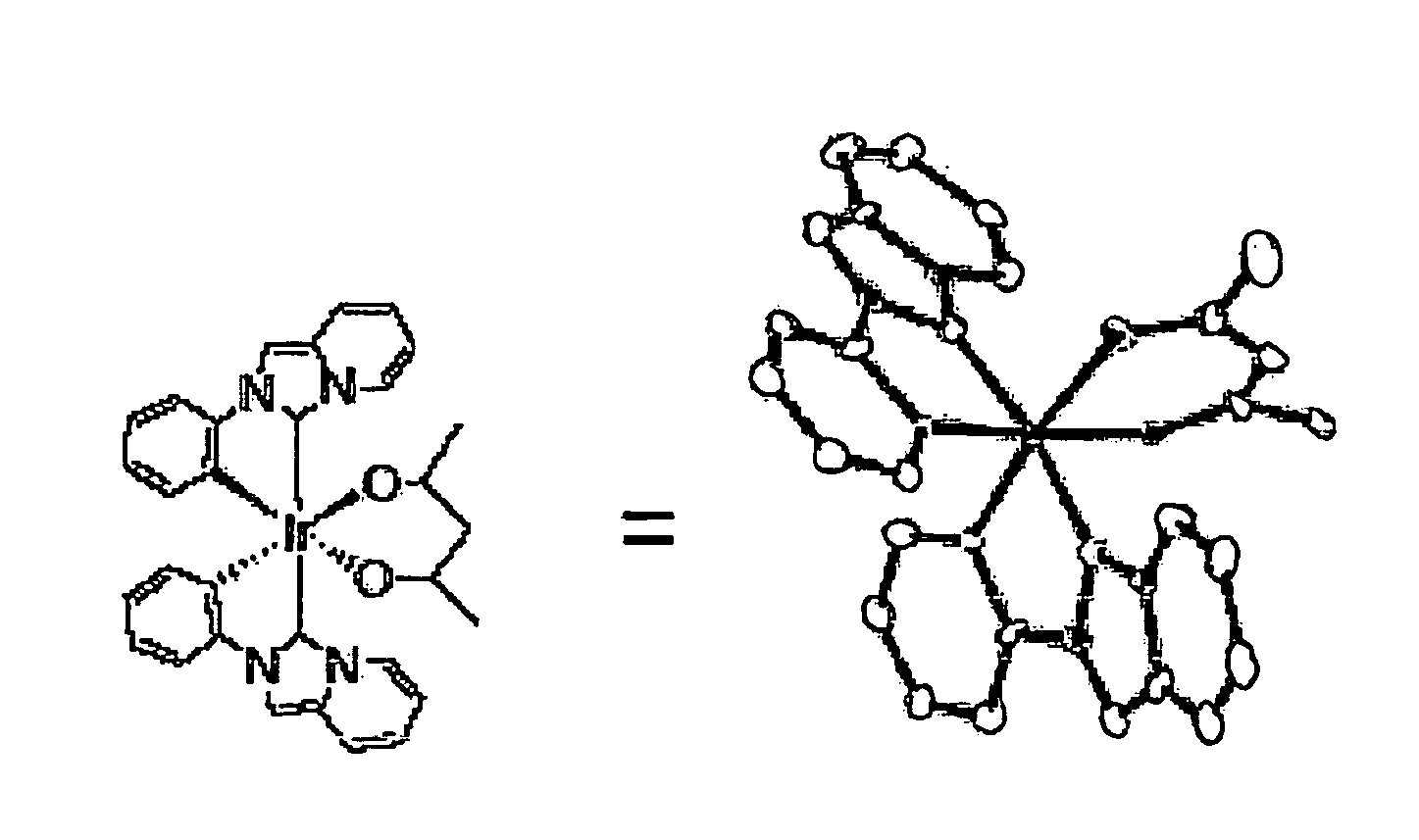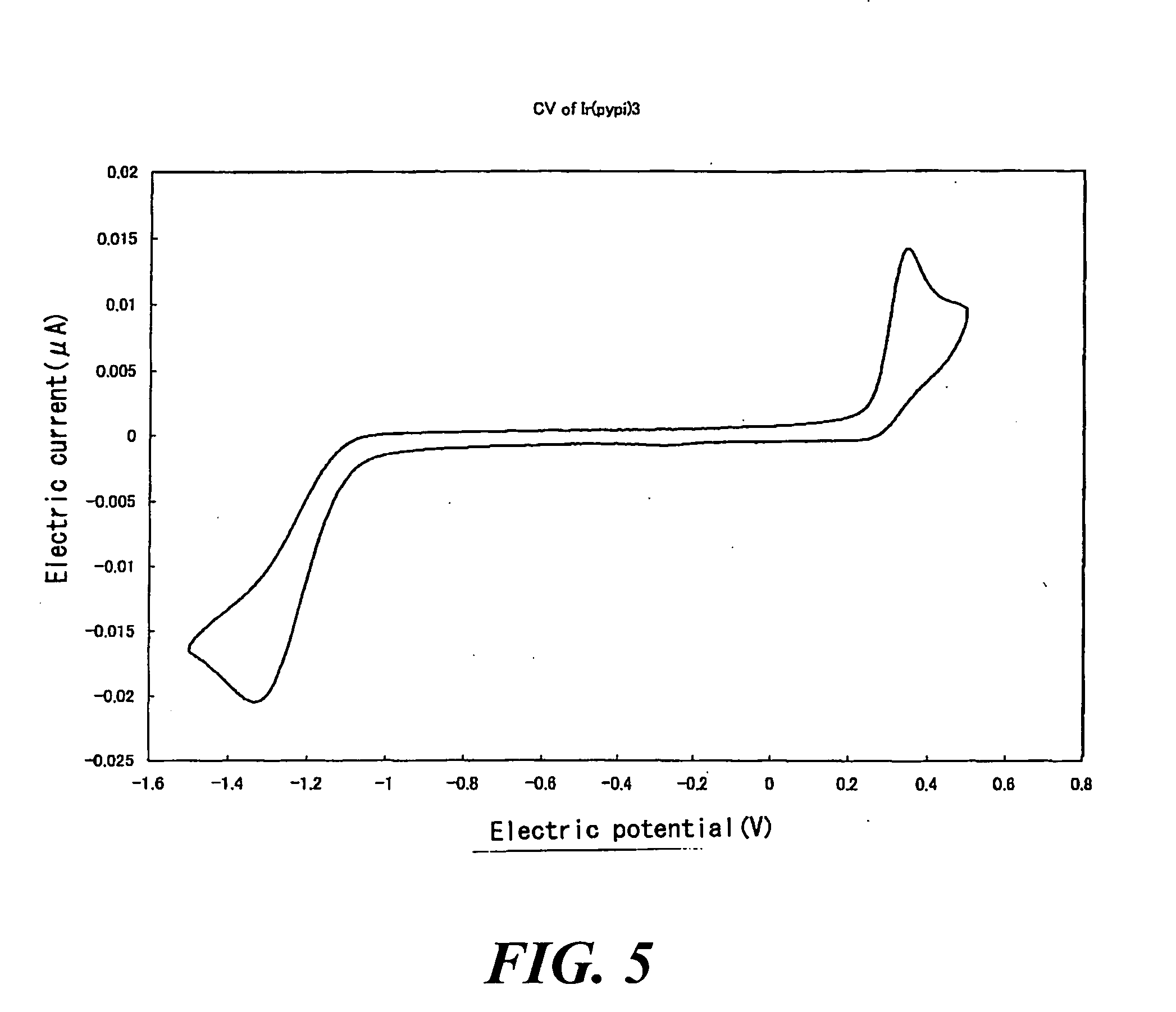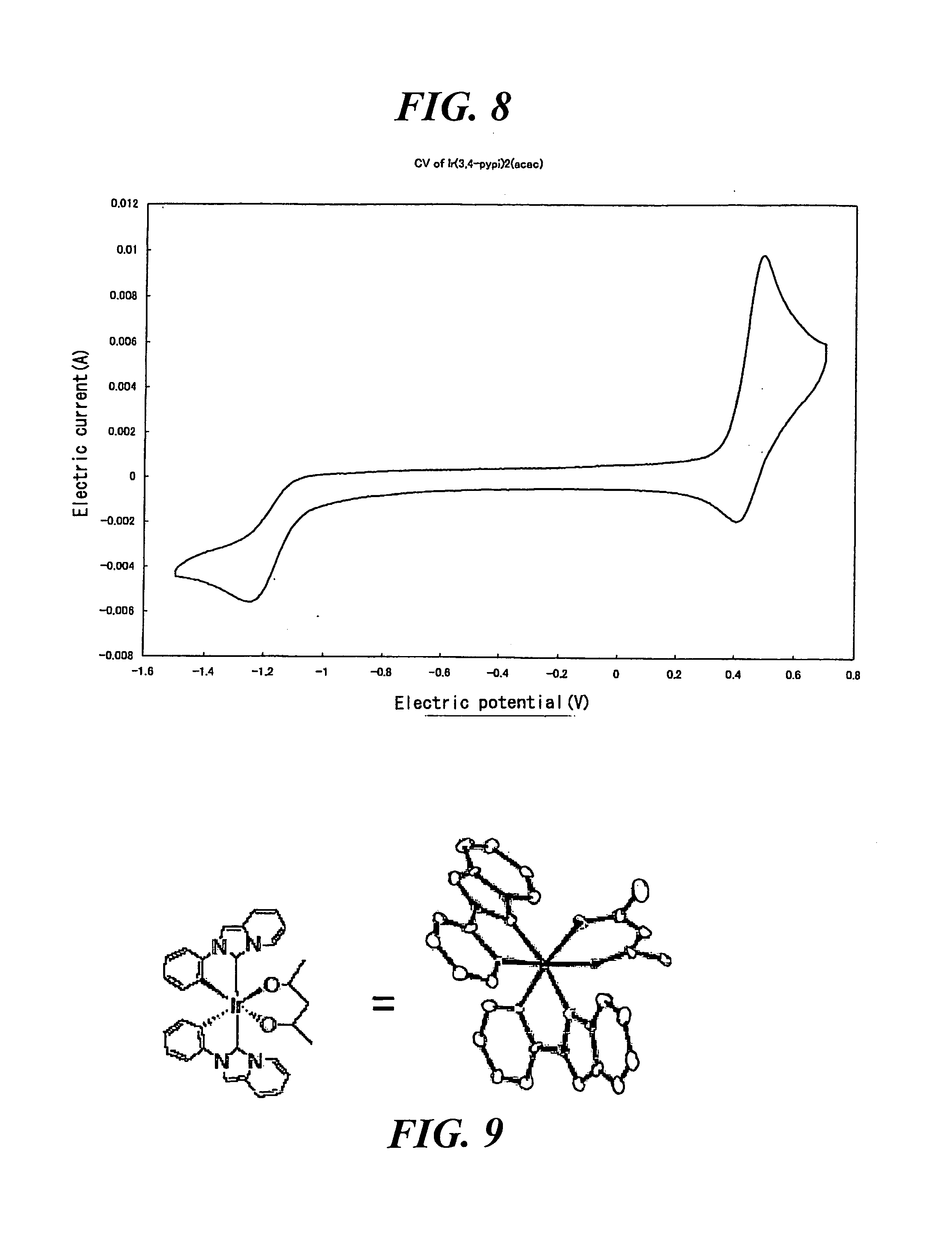Transition metal complex compound
a technology of complex compound and metal, applied in the field of transition metal complex compound, can solve the problems of short device life, weak bonding, marked poor heat resistance, and inability to describe the specific effect of a group bonded to an oxygen atom, and achieve the effect of high luminous efficiency
- Summary
- Abstract
- Description
- Claims
- Application Information
AI Technical Summary
Benefits of technology
Problems solved by technology
Method used
Image
Examples
example 1
Synthesis of Transition Metal Complex Compound 1
(i) Synthesis of Compound a
[0165]A compound a was synthesized by the following reaction step according to a method described in a reference document (Chem. Pharm. Bull., 1965, 13, 1135):
[0166]2-Pyridinemethanol 25.6 g (0.239 mole), aniline 20.3 ml (0.214 mole) and potassium hydroxide 1.92 g (0.0341 mole) were heated and stirred in a Kjeldahl flask at 150° C. for 12 hours. As a result thereof, the solution was changed from a pale yellow oily state to a pale yellow suspension state. This was cooled down to room temperature, and 200 ml of water was added, followed by neutralizing the solution to pH 7 to 8 by diluted hydrochloric acid. Next, 500 ml of methylene chloride was added to this reaction solution, and an organic layer was extracted by means of a separating funnel. Further, the solution was extracted four times with 100 ml of methylene chloride. This solution was dehydrated on potassium carbonate, and a solid component was filtered...
example 2
Synthesis of Transition Metal Complex Compound 1
(i) Synthesis of Compound e
[0186]A compound e was synthesized according to the following reaction step:
[0187]Toluene 50 ml, 2-pyridinecarboxyaldehyde 9.55 ml (0.100 mole, 1.0 eq) and aniline 9.13 ml (0.100 mole, 1.0 eq) were put in a Kjeldahl flask, and as soon as stirring was started, a pale yellow solid matter was produced. Stirring was further continued, and all the solid matter was dissolved to obtain a colorless solution. After stirred at room temperature for 24 hours, the solvent was distilled off under reduced pressure to obtain quantitatively a pale yellow oily compound e. The measuring result of 1H-NMR is shown below.
[0188]1H-NMR (solvent: CDCl3, internal reference: TMS 0.00 ppm, 300 MHz, temperature: 35° C.): δ 7.28 to 7.45 (m, 5H, HPh), 7.37 (ddd, J=7.7, 4.7, 1.1 Hz, 1H, Hb), 7.82 (ddd, J=7.7, 7.7, 1.9 Hz, 1H, Hc), 8.21 (dd, J=7.7, 1.9 Hz, 1H, Hd), 8.62 (s, 1H, He), 8.72 (dd, J=7.7, 1.1 Hz, 1H, Ha)
(ii) Synthesis of Compound ...
example 3
Synthesis of Transition Metal Complex Compound 1
[0206]The compound 1 was synthesized according to the following reaction step:
[0207]The compound f 123 mg (0.100 mmole), silver oxide (I) (Ag2O (I)) 278 mg (1.20 mmole), the compound c 50.7 mg (0.220 mmole) and tetrahydrofuran (THF, deaerated solvent) 20 ml were put in a Schlenk bottle under argon atmosphere, and it was shielded from light with an aluminum foil and stirred under refluxing for 24 hours. The solvent component was distilled off from the reaction solution under reduced pressure, and this was refined by column chromatography using a deaerated solvent (CH2Cl2:hexane=2:1). As a result thereof, 82.1 mg (0.114 mmol, yield: 57.0%) of a pale yellow solid matter.
[0208]The result (refer to FIG. 5) of cyclic voltammetry and the result (refer to FIG. 6) of X-ray crystal structure analysis are shown below.
[Measuring Result of FAB-MS]
[0209]MS (FAB+): m / z=722 (M+), 579 (M+-(Ligand))
[Measuring result of cyclic voltammetry (vs Ag+ / Ag in C...
PUM
| Property | Measurement | Unit |
|---|---|---|
| Electroluminescence | aaaaa | aaaaa |
| Luminous efficiency | aaaaa | aaaaa |
| Luminescence | aaaaa | aaaaa |
Abstract
Description
Claims
Application Information
 Login to View More
Login to View More - R&D
- Intellectual Property
- Life Sciences
- Materials
- Tech Scout
- Unparalleled Data Quality
- Higher Quality Content
- 60% Fewer Hallucinations
Browse by: Latest US Patents, China's latest patents, Technical Efficacy Thesaurus, Application Domain, Technology Topic, Popular Technical Reports.
© 2025 PatSnap. All rights reserved.Legal|Privacy policy|Modern Slavery Act Transparency Statement|Sitemap|About US| Contact US: help@patsnap.com



